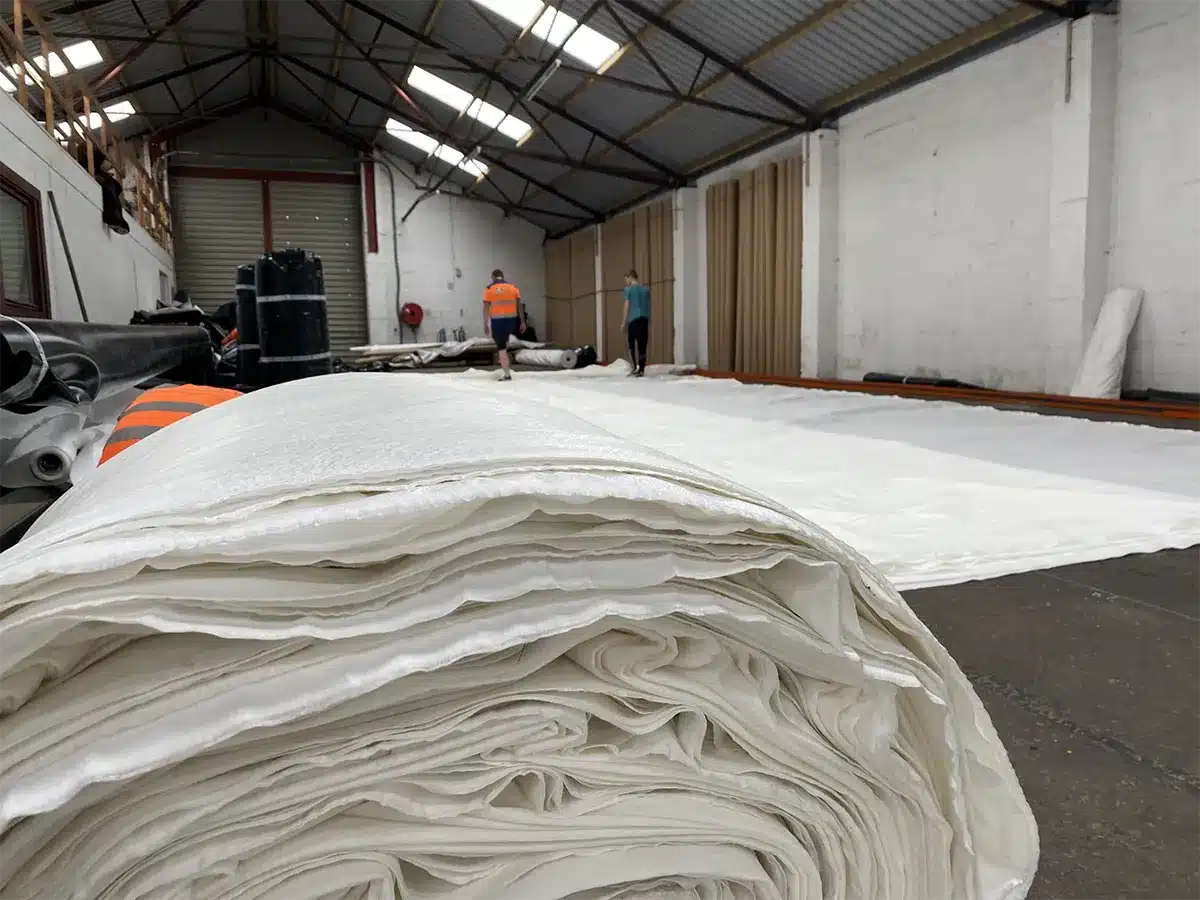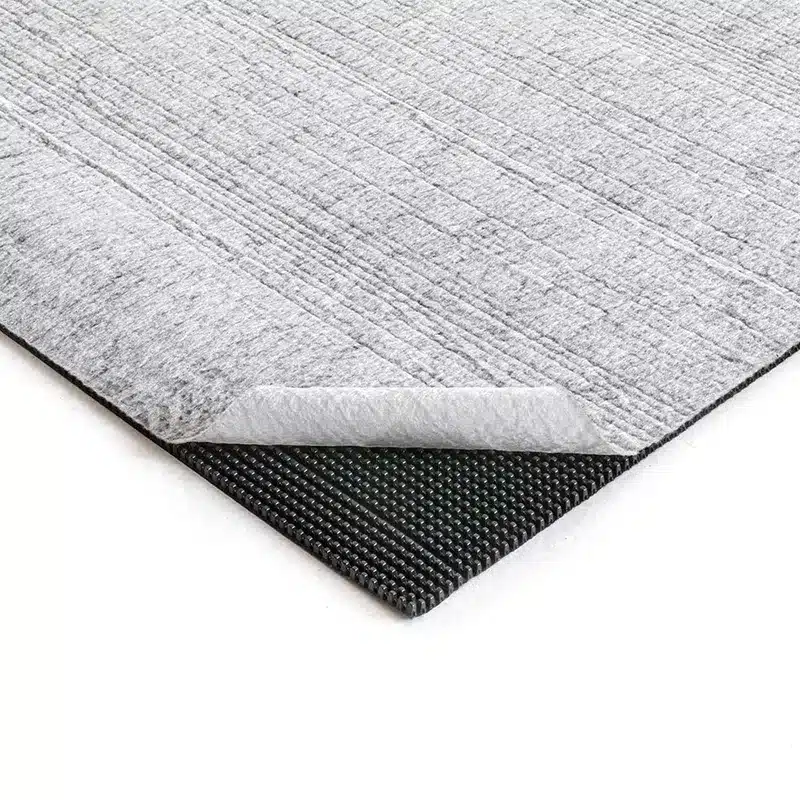+86-159 9860 6917
info@geofantex.com
geofantex@gmail.com
+86-400-8266163-44899
In the realm of engineering and environmental protection, innovative materials pave the way for sustainable practices. Among these materials, the geocomposite clay layer (GCL) stands out as a pivotal solution for various applications, from landfill liners to waterproofing in construction projects. This article delves into the essence of GCL, exploring its functions, applications, and how it differentiates from similar materials such as geomembranes.
What is GCL used for?
Geosynthetic Clay Liners (GCLs) are used in various industries and sectors due to their effectiveness in environmental protection and construction. Here are the primary applications:
Environmental Protection:
- Landfills: GCLs are commonly used as a bottom liner and cover system to prevent leachate from contaminating groundwater.
- Mining: They are used to contain tailings and other waste materials, reducing the risk of environmental contamination.
- Wastewater Treatment: GCLs help in containing and treating wastewater, preventing seepage into the surrounding soil and groundwater.
Construction:
- Reservoirs and Ponds: GCLs provide an impermeable barrier to contain water in reservoirs, ponds, and canals.
- Roadways: They are used to prevent water infiltration in roadbeds, enhancing the durability of road structures.
- Foundations: GCLs are used under building foundations to prevent moisture from seeping through, protecting structural integrity.
Agriculture:
- Irrigation Canals: GCLs are used to line canals, reducing water loss through seepage and improving irrigation efficiency.
- Containment of Agricultural Runoff: They help in containing runoff and preventing contamination of nearby water sources.
Land Reclamation:
- Wetlands Restoration: GCLs are used in wetland restoration projects to create a controlled environment for plant and wildlife habitats.
- Brownfield Sites: They are used in capping contaminated sites, preventing the spread of pollutants, and making the land safe for redevelopment.

What is the function of a geosynthetic clay liner?
Introduction:
Geosynthetic clay liners (GCLs) are widely used materials in various engineering and construction projects. They serve as an essential component in environmental protection and water management systems.
Functions of Geosynthetic Clay Liners:
Barrier System:
- Containment: GCLs act as a barrier to prevent the migration of liquids, including water, leachates, and other contaminants. They are commonly used in landfills, ponds, and canals to contain and isolate waste materials.
- Sealing Properties: The bentonite clay in GCLs swells upon hydration, forming a low-permeability layer that enhances its sealing capabilities.
Environmental Protection:
- Groundwater Protection: GCLs prevent the contamination of groundwater by blocking the seepage of hazardous substances from landfills and industrial waste sites.
- Soil Stabilization: They help stabilize soil in areas prone to erosion and prevent soil contamination by creating an impermeable layer.
Water Management:
- Waterproofing: GCLs are used in water reservoirs, canals, and dams to prevent water loss through seepage, ensuring efficient water management and conservation.
- Leakage Prevention: In mining operations, GCLs are employed to prevent the leakage of toxic liquids and protect surrounding environments.
Applications:
- Landfills: Used as liners to prevent leachate from contaminating groundwater.
- Canals and Reservoirs: Serve as waterproofing barriers to retain water.
- Mining Operations: Prevent the leakage of hazardous liquids.
- Environmental Remediation: Used in projects to contain and remediate contaminated sites.
Geosynthetic clay liners are vital in modern engineering and construction due to their excellent barrier properties, environmental protection capabilities, and effectiveness in water management systems. They ensure the integrity and safety of various structures by preventing contamination and conserving water resources.
What is the difference between GCL and Geomembrane?
While both GCL and geomembrane serve as barriers to fluid movement, they differ significantly in composition and functionality. Geomembranes are synthetic liners, typically made from materials like HDPE (High-Density Polyethylene), offering a straightforward, impermeable barrier. In contrast, Geosynthetic clay liners (GCLs) are composed of a thin layer of bentonite clay sandwiched between two layers of nonwoven geotextiles. This structure allows GCLs to leverage the natural swelling properties of bentonite, forming a seal upon hydration that can self-heal to an extent if punctured, as the clay expands to fill any gaps. In contrast, geomembranes, lacking this self-healing capability, require physical repair when damaged. Furthermore, the use of natural bentonite clay within GCLs not only enhances their functionality but also makes them a more eco-friendly option compared to purely synthetic geomembranes.
What is the GCL layer in a landfill?
In a landfill, the GCL layer, comprising a relatively thin layer of processed clay (typically bentonite) either bonded to a geomembrane or fixed between two sheets of geotextile, acts as a critical component of the lining system designed to protect the surrounding environment from contamination. Strategically positioned at the base and sometimes the sides of a landfill, this innovative layer serves as a robust barrier against leachate—the potentially hazardous liquid that results from the decomposition of waste. By preventing leachate from seeping into the ground and contaminating soil and groundwater, the GCL layer plays a pivotal role in environmental protection efforts within landfill operations, showcasing its indispensability in maintaining ecological integrity.
The geocomposite clay layer emerges as a hero in the narrative of environmental engineering and sustainability. Its versatile applications, ranging from landfill liners to waterproofing solutions, underscore its importance in modern engineering projects. By providing an effective barrier against fluid movement, GCLs play a crucial role in protecting natural resources and ensuring that our engineering practices contribute positively to the environment. As the world continues to seek sustainable solutions, the role of materials like GCL in building a greener future becomes ever more significant.



Get Free Sample
We’ll respond as soon as possible(within 12 hours)






















